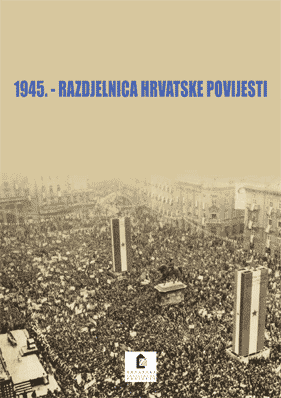Politički i vojni oblici četništva u Hrvatskoj 1945. godine
The Political and Military Aspects of Chetnikism in Croatia in 1945
Author(s): Zdravko Dizdar
Subject(s): History, Recent History (1900 till today), WW II and following years (1940 - 1949), Historical revisionism
Published by: Hrvatski institut za povijest
Summary/Abstract: The Chetnik movement on Croatian territory in 1941-1945 began on the foundations of a prewar movement with the same name, but it was politically and militarily
formed and developed on specifc Croatian territories gradually and at different times as part of a larger united Chetnik movement on the whole of the territory of the former Kingdom of Yugoslavia. It was first a collaborationist movement under the protection and within the system of the Italian occupation forces and administration (1941-1943), and then afterward under German forces (1943-1945); these forced it to cooperate with the authorites of the Independent State of Croatia. It was also accepted by the Kingdom of Yugoslavia≫s government-in-exile and King Petar II, as well as the British government and the western Allies, receiving from them official recognition and help right until the end of the war as a resistance movement, regardless of its collaboration.
The attitude of the Chetnik movement toward Croatia and Croats stemmed from its state-creating programme, its political aims, and the military and political balance of forces on its territory and abroad during the course of the war, that is, from 1941 to 1945. According to the state-creating programme of Draža Mihailović, the leader of the Chetnik movement in the country and accepted by the royal government-in-exile in London, the basic political aim of the Chetnik movement headed by the King was the creation of a ≪Greater Yugoslavia and within it a Great Serbia, ethnically homogenous within its boundaries≫ from Serbia to Slovenia, leaving behind a ≪little Croatia≫ including only the northeast part around Zagreb, Krapina and Varaždin, with the old political system, headed by a king supported by Chetnik terror. The programme of creating such an ethnically pure ≪Great Serbia≫ on the territory of Croatia was continuously carried out during the whole war with the assistance of armed Chetnik units (4th Chetnik Corps, 1st division/dinaric/, 32 brigade and 2nd regiment), which were formed by Serbs from Serbia, Montenegro, and Bosnia and Hercegovina by ethnic extermination. They uprooted Croat and other national minorities and ideological enemies (particularily of members of the anti-fascist Partisan movement, without regard to their ethnic origins including here those Serbs who did not support their Great Serbian programme and methods), utilizing in this capacity cooperation with the Italian fascist and German Nazi occupiers as well as the Ustaša government of the Independent State of Croatia. This was the most massive instance of Serb collaboration in Croatia during the war and a type of Serbian fascism. Thus the Chetnik movement from the beginning and as a whole was, according to its national system and political program, a Great Serbian Nationalist movement, and likewise a anti- Croat movement. By not distinguishing between Croatian Ustaše and Croatian anti fascist elements, it delayed the Croatian people the right to their statehood in the greater part of its national and historical territory carrying out from these the eradication of Croats.
Their genocidal politics, due to strong resistance from the people, failed in the end because of the political judgment of democratic public opinion worldwide, and military defeat and destruction at home.
Book: 1945. - Razdjelnica hrvatske povijesti
- Page Range: 357-381
- Page Count: 25
- Publication Year: 2005
- Language: Croatian
- Content File-PDF

